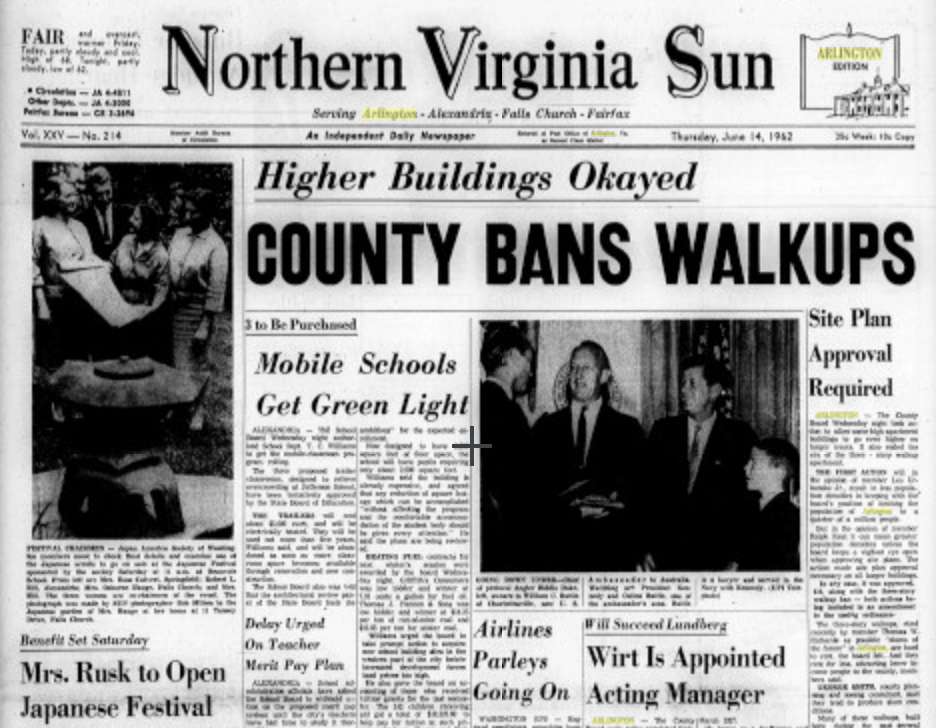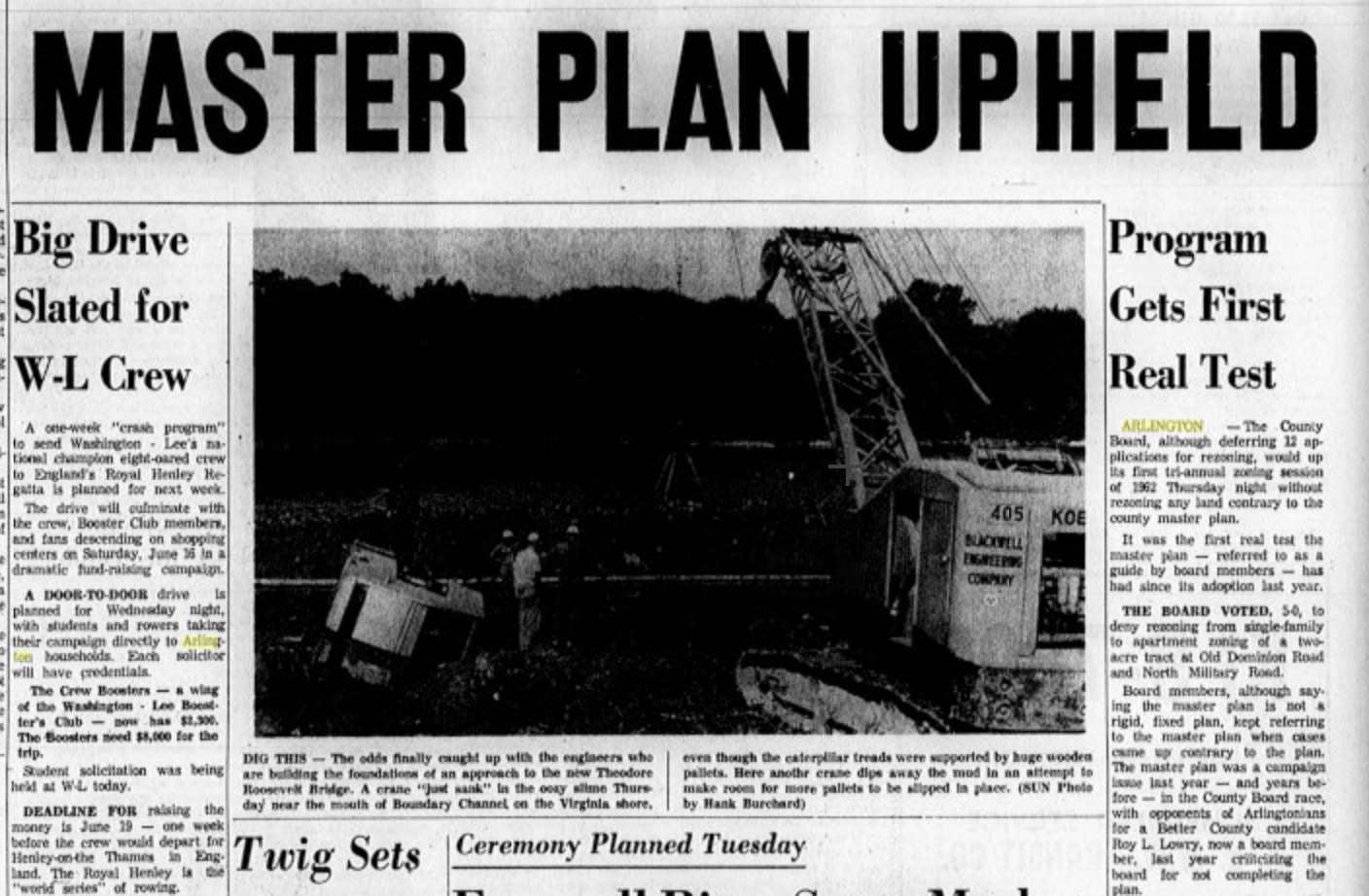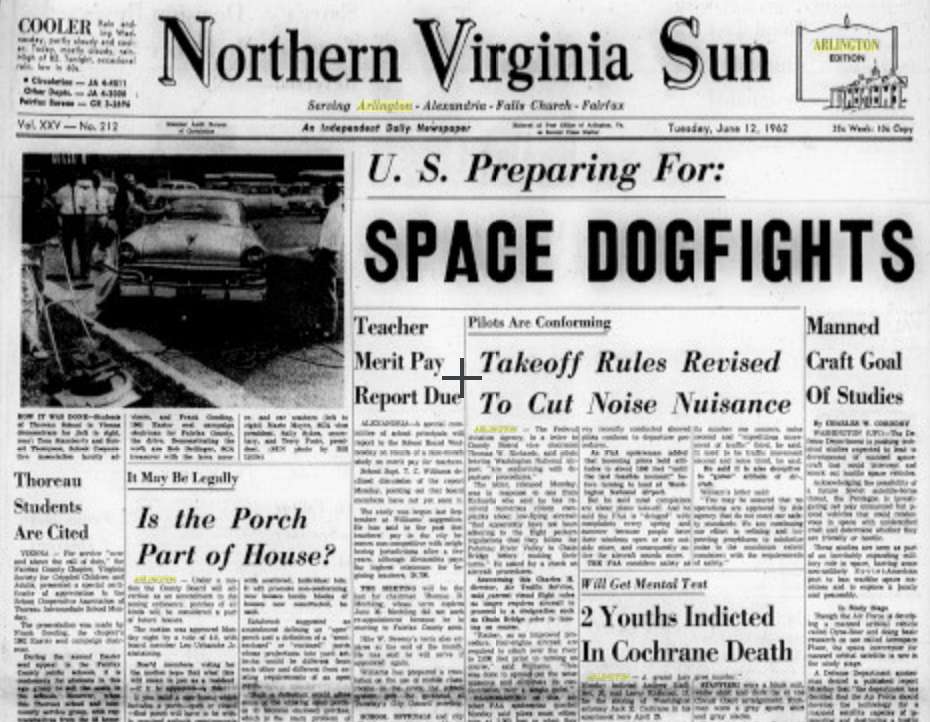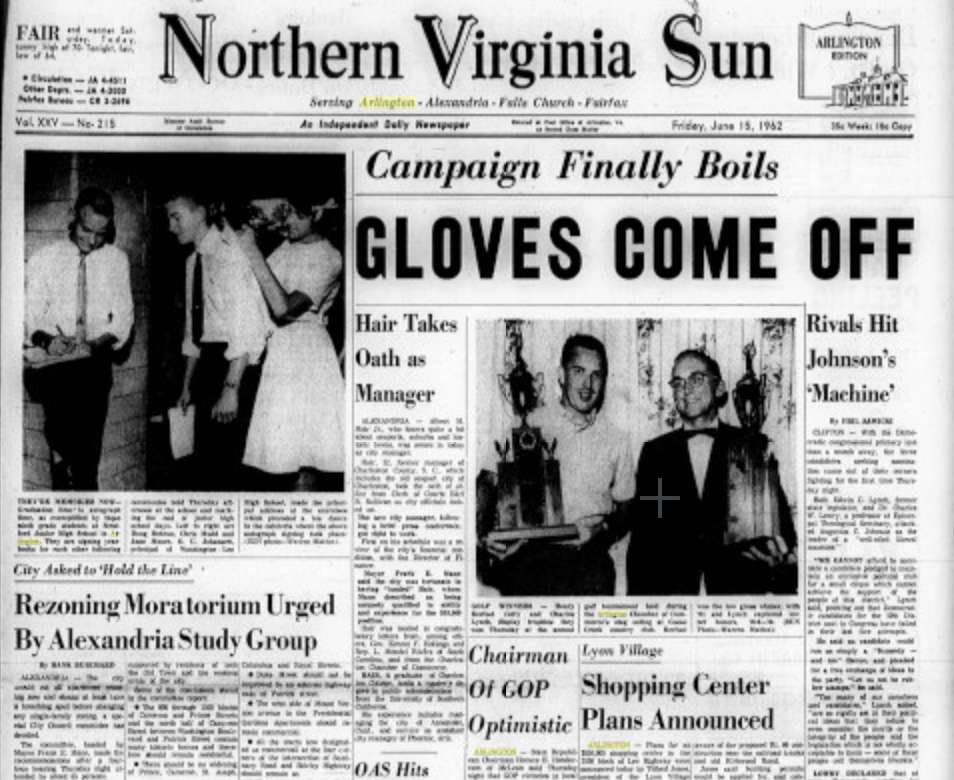Thousands of historic Arlington newspaper issues from 1935 to 1978 are now available online.
Arlington Public Library’s Center for Local History worked with the Library of Virginia to transfer more than 40 years of published material to the Virginia Chronicle, where they are searchable by keyword, date, location and publication.
The materials include newspaper clippings and images published in Columbia News, the Daily Sun, and the Northern Virginia Sun. Previously, these publications were only available in the Center for Local History as microfilm and digital scans, according to Arlington Public Library’s announcement.
“Delve deeper into your family history, find information on the transformation and growth of Arlington and discover more of its unique history,” Arlington Public Library Director Diane Kresh said in a statement.
From the secession of East Falls Church to war-time turmoil to motorcycle gang shootouts, these newspapers captured a number of surprising and notable moments in Arlington’s history.
On March 12, 1936, Justice Henry Holt of the Virginia Court of Appeals allowed the secession of East Falls Church from the township of Falls Church. East Falls Church residents had been unable to deal with the confusion that came with being under the jurisdiction of both Arlington County and Falls Church.
One year later, a Black man served on an Arlington trial jury for the first time since Reconstruction. Sixty-year-old J.J. Carpenter heard the case of Carrie Branch, who was charged with assault. She was eventually convicted and sentenced to a year in county jail.
In 1938, an Arlington jury decided people could go to the movies on Sundays. They determined theaters were exempt from Virginia’s “Blue Law,” which prohibited Sunday shopping and entertainment. An editorial in “The Sun” expressed relief, casting the law as outdated.
During World War II, Arlington County Police assisted the FBI with a nationwide roundup of German and Italian immigrants, arresting five Germans in Arlington and seizing shortwave radios, shotguns, rifles, pistols, and small-caliber ammunition. Not long after, gas ration cards began to be distributed in Arlington schools, followed by sugar and boots rations.
Meanwhile, in February of 1944, Arlington’s first modern hospital opened after more than a decade of citizen-led activism. Arlington Hospital building cost $530,000 and had 100 beds and 50 nurses.
The newspaper also chronicled the saga of students Ronald Deskins, Lance Newman, Gloria Thompson and Michael Jones, who desegregated Stratford Junior High School (now Dorothy Hamm Middle School) in February 1959. An Arlington County police captain said at the time that 90 officers were stationed inside and outside the school to maintain order.
Arlington also had some gang activity in the 1960s. Police officers arrested young men and juveniles from the Pagans and Avengers, two rival motorcycle gangs, after a shooting at a shopping center. The County Board called an emergency meeting to explore stricter gun control measures and increased police power.
Over the course of a couple of weeks in 1962, while national headlines in the Northern Virginia Sun discussed President John F. Kennedy’s economic plans and the space race, local headlines were a mix of what now seems alternately antiquated and surprisingly familiar.
Amid stories of young Arlington ladies entering society and getting engaged were headlines about debates over rezoning single-family home lots to allow for apartment buildings, noise from aircraft taking off from National Airport, and the planned Lyon Village Shopping Center.
Later, in 1965, an association of area churches led a drive to push for fair housing practices while a previously widespread and deadly disease — scarlet fever — was reported to be finally on the decline.
Photos via Virginia Chronicle






